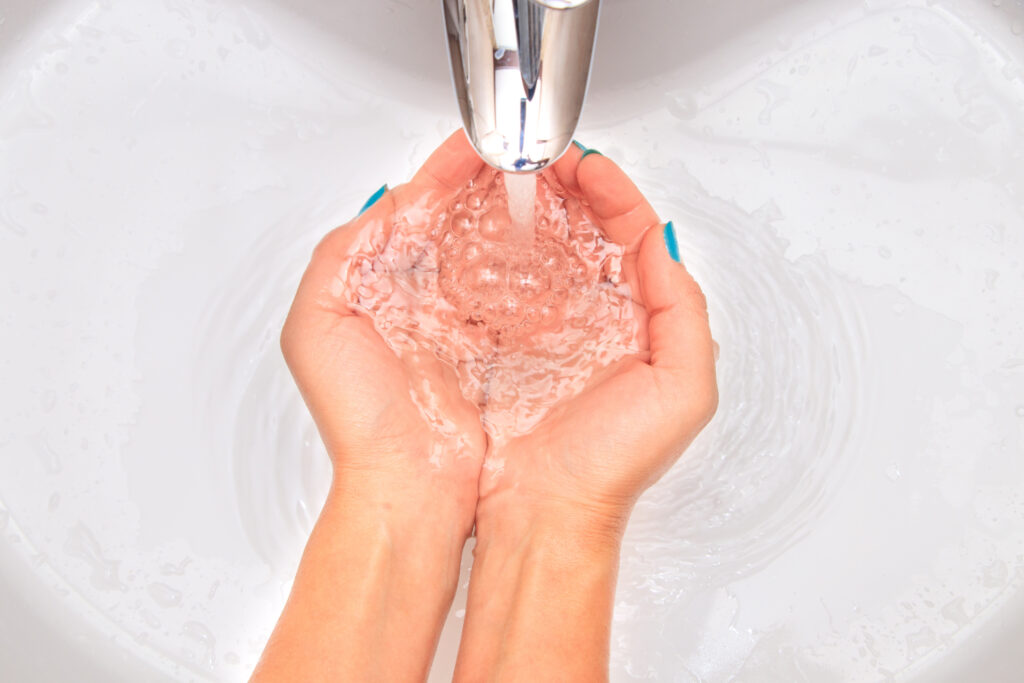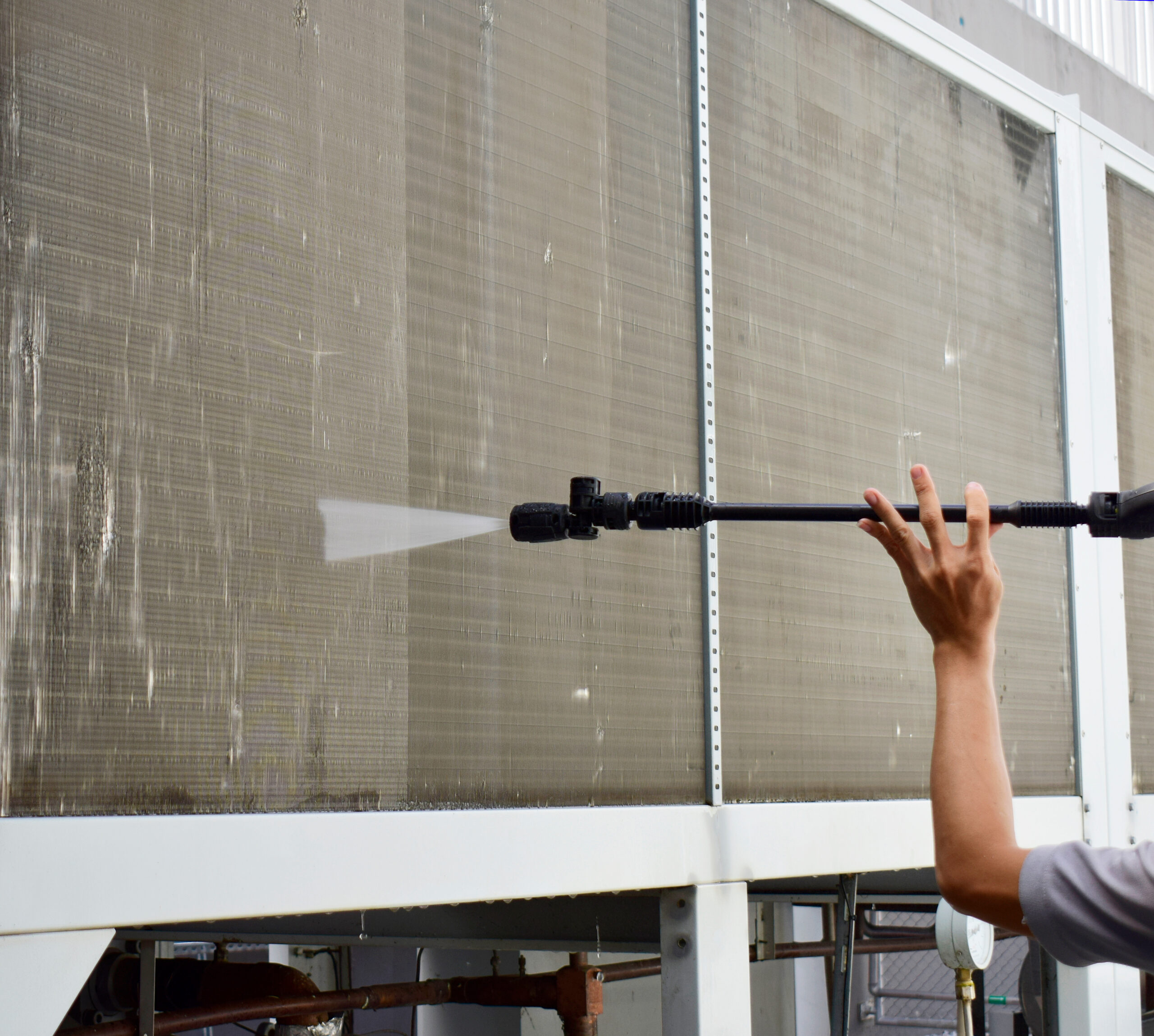Can your facility afford not to be LegionellaREADY? The health and safety risk for Legionella bacteria and Legionnaires’ Disease can be greatly reduced through proper water hygiene. Legionella water treatment services from ChemREADY has a full offering to protect you and your facility:
Legionella pneumophila was first discovered at the 1976 American Legion Convention in Philadelphia. Legionnaires’ Disease is a pneumonia-like lung infection contracted through the aspiration of water containing the bacteria.
Legionella bacteria can be found in rivers, lakes, and streams. Low levels of bacteria can make it through municipal drinking water plants and enter building water systems, where they can multiply and flourish. If routine testing is not performed by facilities, this could eventually lead to a Legionella outbreak and potentially be the cause of Legionnaires’ Disease.
Legionnaires’ Disease spreads through inhaling contaminated water droplets. People with higher risk, such as smokers or those with lung disease, are more susceptible due to compromised defense mechanisms against aspiration.
Legionella spreads through water systems in large buildings like hotels and hospitals. Other sources include mist machines, hot tubs, and decorative fountains. Regular air conditioners do not pose a risk.
People contract Legionnaires’ Disease by inhaling water droplets contaminated with Legionella bacteria. Aspiration, where water enters the lungs accidentally, is the most common method. High-risk individuals include smokers and those with lung diseases.

Environmental Health and Safety (EHS) professionals and infection control personnel must integrate water safety into their facility’s risk management processes. Water safety plans, known as Water Management Plans (WMPs), are crucial. The American Society of Heating, Refrigerating, and Air-Conditioning Engineers (ASHRAE) developed Standard 188-2021, which outlines how to develop WMPs, conduct risk assessments, and meet healthcare-specific requirements.
A WMP documents maintenance tasks, performs periodic testing, and includes verification and validation steps to minimize health and safety risks. Knowledgeable experts on your water safety team, like ChemREADY Legionella consultants, are essential for effective Legionella water treatment.
Healthcare facilities must have Water Management Plans (WMPs) if they fall under the requirements of the Centers for Medicare and Medicaid Services (CMS) or the Joint Commission. Starting January 1, 2022, all Joint Commission-certified healthcare facilities must comply with Joint Commission Standard EC02.05.02, which includes:
The team responsible for WMPs must review their program annually or whenever changes to the water system, such as commissioning a new wing or building, introduce additional risks.
Ensure your Water Management Plan is audit-ready, as auditors will be more stringent than in recent years. For more information on the requirements applicable to your facility, visit our Legionella Resource Center for effective Legionella water treatment solutions.
Many water treatment companies don’t test for Legionella in cooling towers, leaving your facility at risk if an outbreak occurs. The Cooling Technology Institute (CTI) recommends best practices, including the heterotrophic plate count test, which measures bacteria levels as Colony Forming Units (CFU). The acceptable range for most open cooling systems is 10,000 CFU/ml.
CTI Guideline 159 states, “This limit indicates that the microbial control program is providing a reasonable degree of system cleanliness, but it does not provide any guarantee that the system will be free of Legionella bacteria.” Without testing for Legionella, the risk remains unknown.
A water safety plan for cooling towers is essential. Regular Legionella testing is critical, with the American Industrial Hygiene Association (AIHA) recommending monthly tests.
Contact ChemREADY today to develop your water safety and testing plan, ensuring effective Legionella water treatment.

What is Legionella and why is it dangerous? Legionella is a type of bacteria that can cause Legionnaires’ disease, a severe pneumonia-like illness. It thrives in warm water systems and poses a risk in environments like hospitals and hotels.
How does Legionella spread in water systems? Legionella spreads through water systems in large buildings, including cooling towers, hot tubs, and decorative fountains. It is often contracted by inhaling contaminated water droplets.
What are the key steps in Legionella water treatment? Effective Legionella water treatment involves regular testing, chemical disinfection, and maintaining a Water Management Plan (WMP). It’s essential to prevent bacterial growth and reduce health risks.
Why is regular testing for Legionella important in cooling towers? Regular testing is crucial because cooling towers provide an ideal environment for Legionella to thrive. Without testing, the risk of outbreaks remains high.
What are Water Management Plans (WMPs) and why are they necessary? WMPs are comprehensive plans that outline maintenance, testing, and corrective actions to control Legionella growth in water systems. They are required in healthcare facilities and recommended for other high-risk environments.